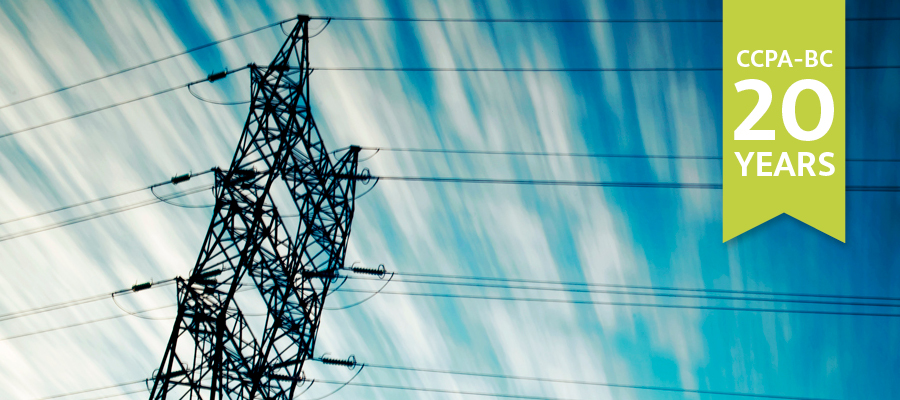Sticker Shock: The impending cost of BC Hydro’s shift to private power developers – Ten years on

In April 2007, the BC government’s energy policy was rapidly transforming the province’s electricity system from publicly owned to one operated in the interests of private energy developers and multinational energy corporations.
Sticker Shock was written to expose the enormous costs of the BC government’s private power agenda. It documented the fact that the BC government was directing BC Hydro to purchase large volumes of private power at prices significantly above the prevailing market price while arbitrarily preventing BC Hydro from developing new wind and run of river projects. The article was intended to raise the alarm that implementing then-premier Gordon Campbell’s ’privatization by stealth’ approach would dramatically increase the rates paid by hydro customers and undermine the financial viability of BC’s most successful Crown Corporation.
The article drew from my research for the book Liquid Gold which provided a much more extensive analysis of the privatization policy framework that the provincial government was adopting at the time. I argued that reliance on new, privately generated electricity from small run of river hydro or wind projects made no economic sense given the exorbitant cost of the long-term energy purchase agreements the government forced BC Hydro to sign, given the intermittent and seasonal characteristics of the energy being purchased and given the very large price risks to BC ratepayers.
The government’s private power agenda was fundamentally wrong for a number of reasons.
The article noted that the government’s private power agenda was fundamentally wrong for a number of reasons. First, it involved a massive give-away of public assets. The sites for development of small hydro and wind were located on Crown land. Private power developers were given water licenses for a maximum of $10,000 per site—virtually nothing. And, the government charged private developers water rental fees that were a fraction of what it required BC Hydro to pay on its hydro generating facilities.
Similarly, licenses of occupation for wind farm development across the province were handed over to private interests for next to nothing even though BC Hydro had already spent substantial sums identifying the most promising sites. This giveaway of valuable public wind assets will have long-term adverse financial impacts for future generations because of the potential of wind to provide the renewable energy needed to address climate change.
Second, it was bad environmental policy, promoting the construction of new dams on many of BC’s most beautiful, pristine rivers. Both the construction and subsequent access to remote areas severely impacted fish stocks and wildlife as well as opening up parts of the province that arguably should remain untouched by development. These new dams only made economic sense because of the high price BC Hydro was paying for this intermittent energy—energy that came at the wrong time of the year when BC Hydro least needed it.
Third, private power projects provided very few long-term jobs once the run of river projects were completed. The government even failed to implement local employment requirements to ensure the limited number of construction jobs would go to members of local communities and First Nations where the projects were located. Once built, these projects provided an ongoing stream of revenue to their private owners but virtually no economic benefits to the affected communities.
Forth, BC Hydro’s long-term energy purchase agreements effectively shifted the risks of generating private power to ratepayers. Awarding 30- to 60-year contracts at guaranteed prices—well over double the market price at the time—meant that BC Hydro assumed the full financial risk of these projects. As a result, BC Hydro ratepayers were saddled with a massive financial liability, and the full costs were even greater than was apparent when Sticker Shock was published.
In discussing its private power purchase liabilities in its 2015-2016 Annual Service Plan report, the Crown Corporation noted that…”The total BC Hydro combined payments are estimated to be approximately $1,472 million for less than one year, $6,592 million between one and five years, and $48,272 million for more than five years and up to 55 years.” (p. 86)
The dramatic rate increase that BC Hydro customers face is because of support for private power.
Including these liabilities, the government has committed BC ratepayers to over $56 billion in payments to private power interests. While there is – quite rightly – major concern about the estimated $10 billion, or more, cost of Site C, surprisingly, the much-larger financial liability of the private power contracts to which ratepayers are now committed receives almost no media attention. Despite this enormous commitment of public money, the government gets no assets for its private power expenditures, and arguably, the major factor in the dramatic rate increase that BC Hydro customers face is because of support for private power.
A fifth reason these projects were ill-advised was the requirement for BC Hydro to make major investments in new infrastructure—transmission lines and related equipment—in order for private projects to connect to the grid. Much of the costs were swallowed by BC Hydro because of the contracts with private power companies.
A final concern about the government’s private power agenda is that it shifted the politics of electricity in BC because the government invited a number of new corporations into BC’s energy policy arena. Future provincial decision-making must take into account the interests of a swath of new investors whose objective is to maximize their financial returns, and who have significant resources and political clout—courtesy of the generous public contracts they received – to pursue their interests at ratepayers’ expense. Many of these investors are not from BC or Canada and they now have a seat at the table determining how our electricity system will be managed.
Despite the analysis in Sticker Shock and other critiques of government policy (such as those made by Marvin Shaffer and Rafe Mair), the provincial government continued to implement its private power agenda. The significant time delay between when contracts were signed and their subsequent impact on hydro rates was one of the reasons generating opposition to the provincial government’s private power agenda was so difficult. Depending on the project, it took five to eight years, and in some cases up to 10, to award contracts and there was little direct impact on hydro rates. Absent such a price signal, and given the unwillingness of the media to raise this issue in any significant way, BC residents were lulled into believing that private energy contracts would have little impact on their hydro rates.
It was very difficult to make the government’s private power agenda a major election issue.
Also, private power interests actively promoted their projects as being ‘green’. Critics of their agenda were characterized as opposing the expansion of renewable power, which they believed only the private sector should provide. Consequently, Liquid Gold was subjected to significant attacks with industry representatives leafletting the numerous public events at which I presented my analysis.
Most significantly, however, it was very difficult to make the government’s private power agenda a major election issue. Elections are won on a range of issues, and the privatization of BC’s electricity system never got real traction and was overshadowed by other electoral concerns. Consequently, with the re-election of Gordon Campbell’s government in 2009, the prospect of reversing the government’s policies faded. By the next election, the contracts were firmly in place.
The disastrous legacy of this government policy agenda remains today. BC Hydro is awash in liabilities that have built up over the past 16 years. The Crown Corporation that used to provide over three quarters of a billion dollars in revenue annually to the province, while maintaining among the lowest hydro rates in North America, is no longer capable of making the significant contribution to the provincial economy it once did. BC’s competitive advantage in electricity rates is a thing of the past, and ratepayers will be assessed increases above the rate of inflation for many years. Regrettably, BC Hydro will continue to purchase large volumes of private power at exorbitant prices for generations to come due to the locked in ‘take or pay’ contracts it has signed. Even more deplorable, BC Hydro does not need this power and will continue to dump much of it in the energy market at a fraction of what it is paying for it.
The beneficiaries of Gordon Campbell’s private power agenda would like this to be forgotten. They would prefer us to believe that the dramatic increases in electricity rates are the result of inherent inefficiencies of public enterprises such as BC Hydro rather than the government’s deliberate support of a private power agenda. If there is one lesson from this experience it should be that privatization has a price—a price that should not be forgotten and that should inform future debates when private interests (and governments beholden to them) promote such agendas.
Topics: Climate change & energy policy, Economy, Environment, resources & sustainability, Privatization, P3s & public services


